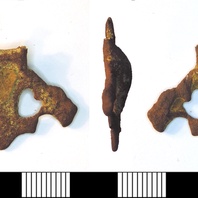
Viking Objects
Harness Mount (LEIC-9EB6F8)
This incomplete Anglo-Scandinavian harness mount or pendant seems to be decorated with a stylised animal head and may have been lozenge-shaped.
Read More
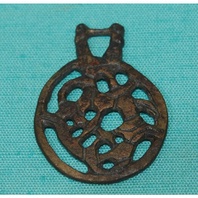
Viking Objects
Copper Alloy Pendant (L.A18.1860.0.0)
A Viking-style copper-alloy pendant with zoomorphic and open knotwork interlace design. Pendants were worn as jewellery and came in a variety of shapes and styles showing the influences of the local cultures with whom the Vikings came into contact. Pendants were a popular dress accessory in Norway and Sweden and sometimes were worn with beads between a pair of oval brooches. In England, pendants did not have the same popularity and there do not seem to be any contemporary Anglo-Saxon pendants.
Read More
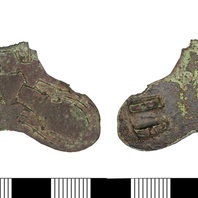
Viking Objects
Trefoil Brooch (LEIC-33DBDC)
Trefoil brooches were characteristically Scandinavian women’s wear. However, many examples found in the East Midlands were probably made in the Danelaw, and may have been copies of Scandinavian styles, instead of being imported from Scandinavia. The presence of Borre-style interlace on this example classifies it as Maixner’s type E. For more information on Scandinavian jewellery in England check out our blog: Brooches, Pendants and Pins: Scandinavian Dress Accessories in England.
Read More
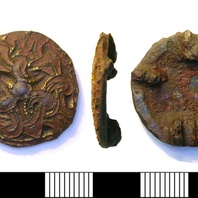
Viking Objects
Copper-Alloy, Gilded Disc Brooch (LEIC-E7A016)
A copper alloy, gilded brooch with a zoomorphic design in the Borre style. This brooch was probably made in Denmark and brought to England. For more information on Scandinavian jewellery in England check out our blog: Brooches, Pendants and Pins: Scandinavian Dress Accessories in England.
Read More
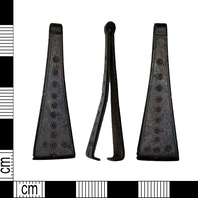
Viking Objects
Copper-Alloy Tweezers (LEIC-F41656)
A pair of copper-alloy tweezers found in Bassetlaw, Nottinghamshire. These feature a ring-and-dot stamped pattern with a tube at one end to accommodate a suspension loop. They would have been carried suspended from a brooch or belt. Tweezers were common personal items that people would have carried with them. They could be highly decorated.
Read More
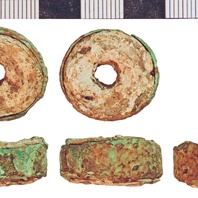
Viking Objects
Copper-Alloy Edged Lead Weight (NLM-E6E083)
A lead weight edged with a copper-alloy band. The distinction of weights by embedded objects or other embellishments in various media is a widely recognised feature of some early medieval weights. The object has also been identified as a spindle whorl, though this is less likely. If a weight, it is perhaps an indicator of the Scandinavian bullion economy. Weights are an important form of evidence for Viking Age commerce and the use of standards across the different economic systems within which Vikings were integrated. Many of the weights discovered, particularly ones in Ireland and those of Arabic type, suggest that a standardized system of weights existed in some areas. These standard weights, alongside standard values of silver, are what allowed the bullion economy of Viking occupied areas to function. A bullion economy was a barter economy that relied on the exchange of set amounts of precious metal in various forms, such as arm-rings or coins, for tradable goods, such as food or textiles. Each merchant would have brought their own set of weights and scales to a transaction to make sure that the trade was conducted fairly.
Read More
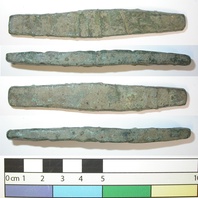
Viking Objects
Copper Alloy Ingot (1986/975-AE29)
This copper alloy ingot was found at the Little Chester Roman fort site near the Roman defences of Derby. This item, alongside others found in the ditches and structures close to the Roman defences, suggests a high level of activity in the area and a significant early medieval presence at this stronghold. Being found in proximity to a stone mould, it is likely that this ingot was used for metalworking, probably of jewellery. Similar ingots are known from Viking period contexts in northern Europe, as at Birka and Lund.
Read More
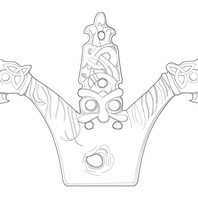
Viking Designs
Drawing of a Mystery Item
This is a drawing of a gilded, copper alloy object that was clearly affixed to something else. The gilding shows that it was high status but its function remains a mystery.
